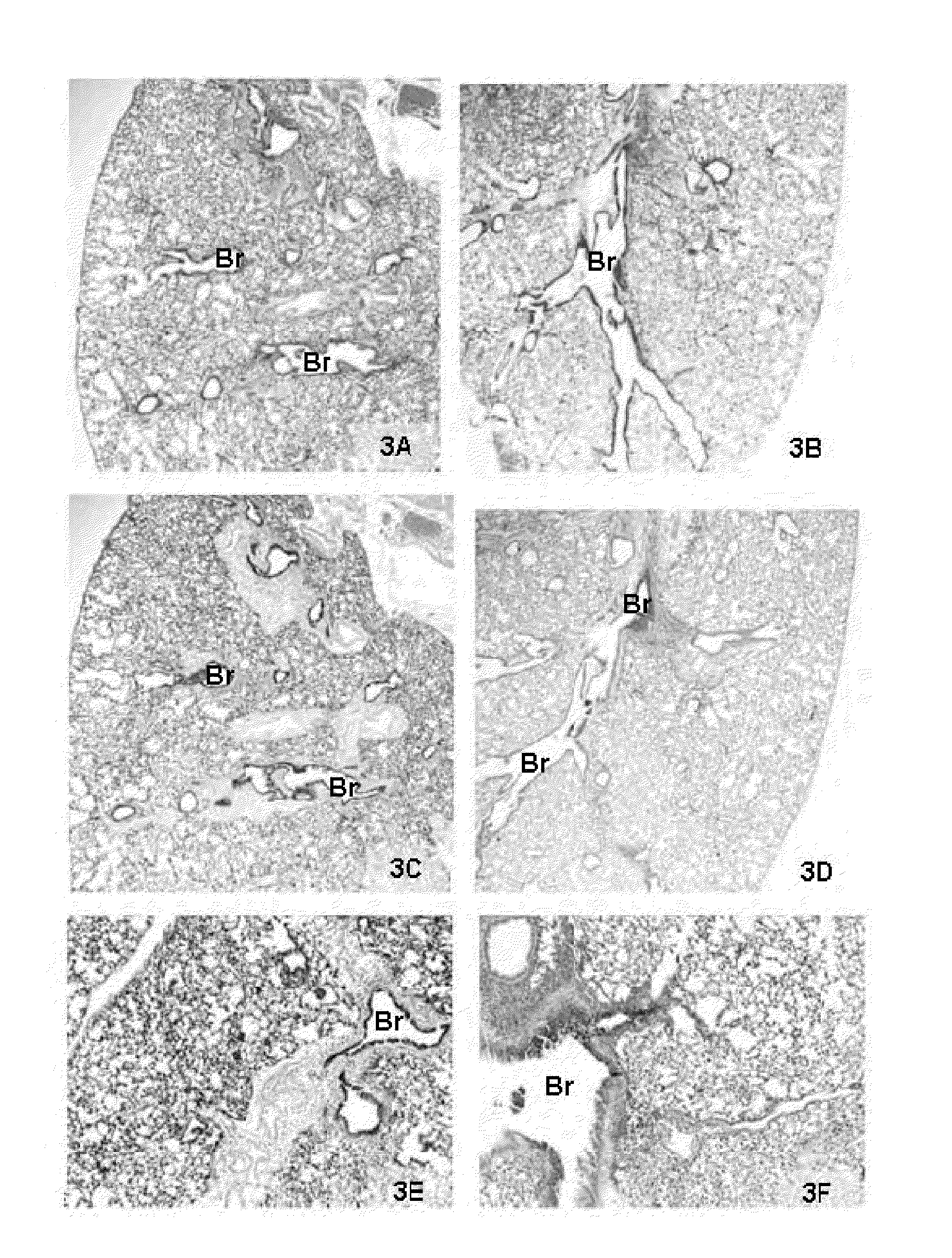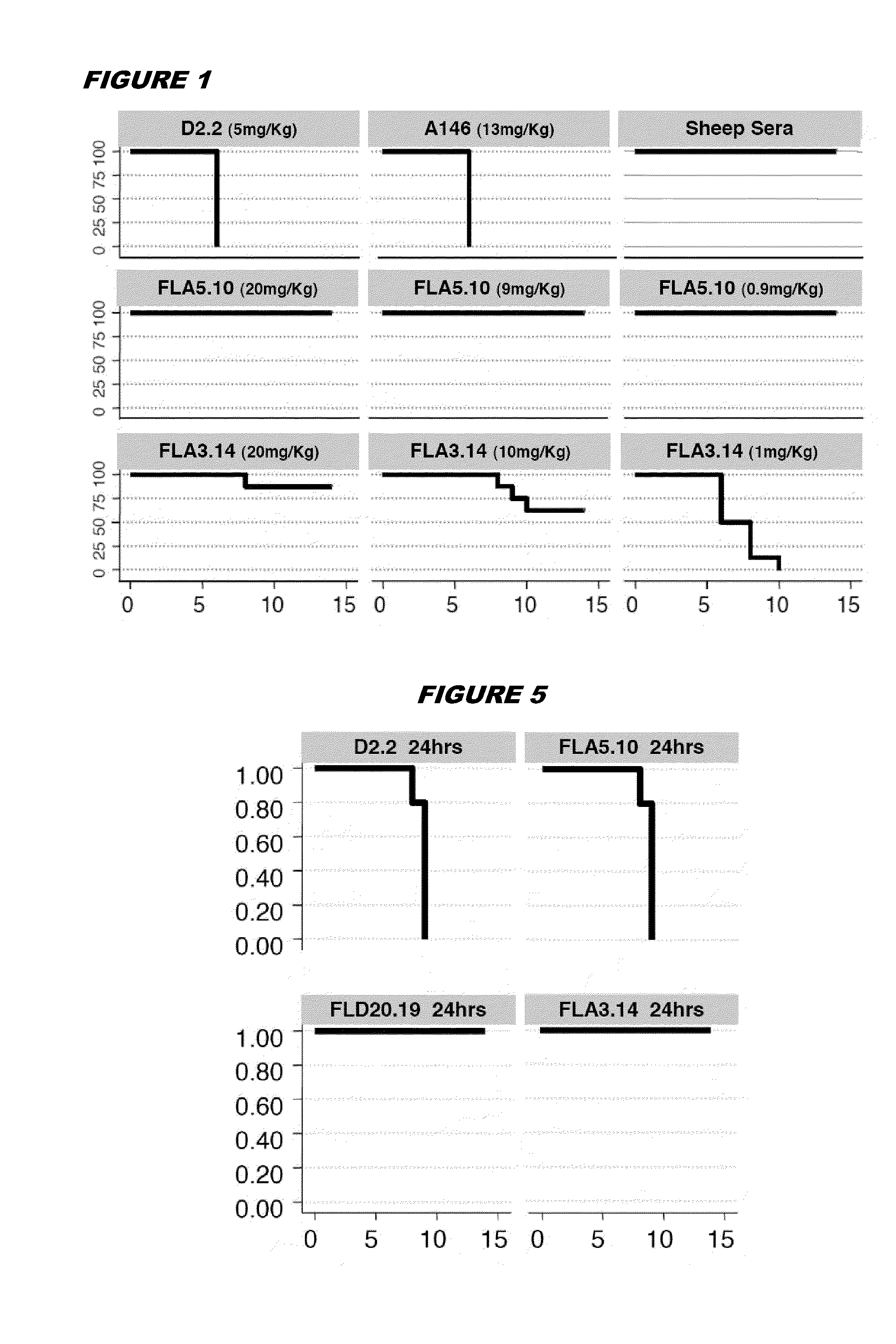Antibodies against h5n1 strains of influenza a virus
- Summary
- Abstract
- Description
- Claims
- Application Information
AI Technical Summary
Benefits of technology
Problems solved by technology
Method used
Image
Examples
Embodiment Construction
Generation of Immortalised B cells
[0118]Four adults were diagnosed with HPAI (highly pathogenic avian influenza) H5N1 infection. During early convalescence (1-4 months post illness onset), all subjects had detectable neutralizing antibody titers to their autologous virus. After receiving written informed consent from the patients, blood was taken from all four patients.
[0119]Frozen peripheral blood mononuclear cells (PBMCs) were thawed and stained with antibodies against CD22, IgM, IgD and IgA. CD22+ IgM−, IgD−, IgA− B cells were isolated using a FACSAria machine. The B cells were then immortalized at 30 cells / well using EBV in the presence of CpG oligodeoxynucleotide 2006 and irradiated allogeneic PBMC [8]. Cells were cultured in complete RPMI 1640 (cRPMI) supplemented with 10% foetal calf serum. Culture supernatants were harvested after 14 days and screened for neutralizing activity.
[0120]Neutralization was assessed by a microneutralization assay using MDCK cells and 100 TCID50 of...
PUM
| Property | Measurement | Unit |
|---|---|---|
| Concentration | aaaaa | aaaaa |
| Concentration | aaaaa | aaaaa |
| Concentration | aaaaa | aaaaa |
Abstract
Description
Claims
Application Information
 Login to View More
Login to View More - R&D
- Intellectual Property
- Life Sciences
- Materials
- Tech Scout
- Unparalleled Data Quality
- Higher Quality Content
- 60% Fewer Hallucinations
Browse by: Latest US Patents, China's latest patents, Technical Efficacy Thesaurus, Application Domain, Technology Topic, Popular Technical Reports.
© 2025 PatSnap. All rights reserved.Legal|Privacy policy|Modern Slavery Act Transparency Statement|Sitemap|About US| Contact US: help@patsnap.com



